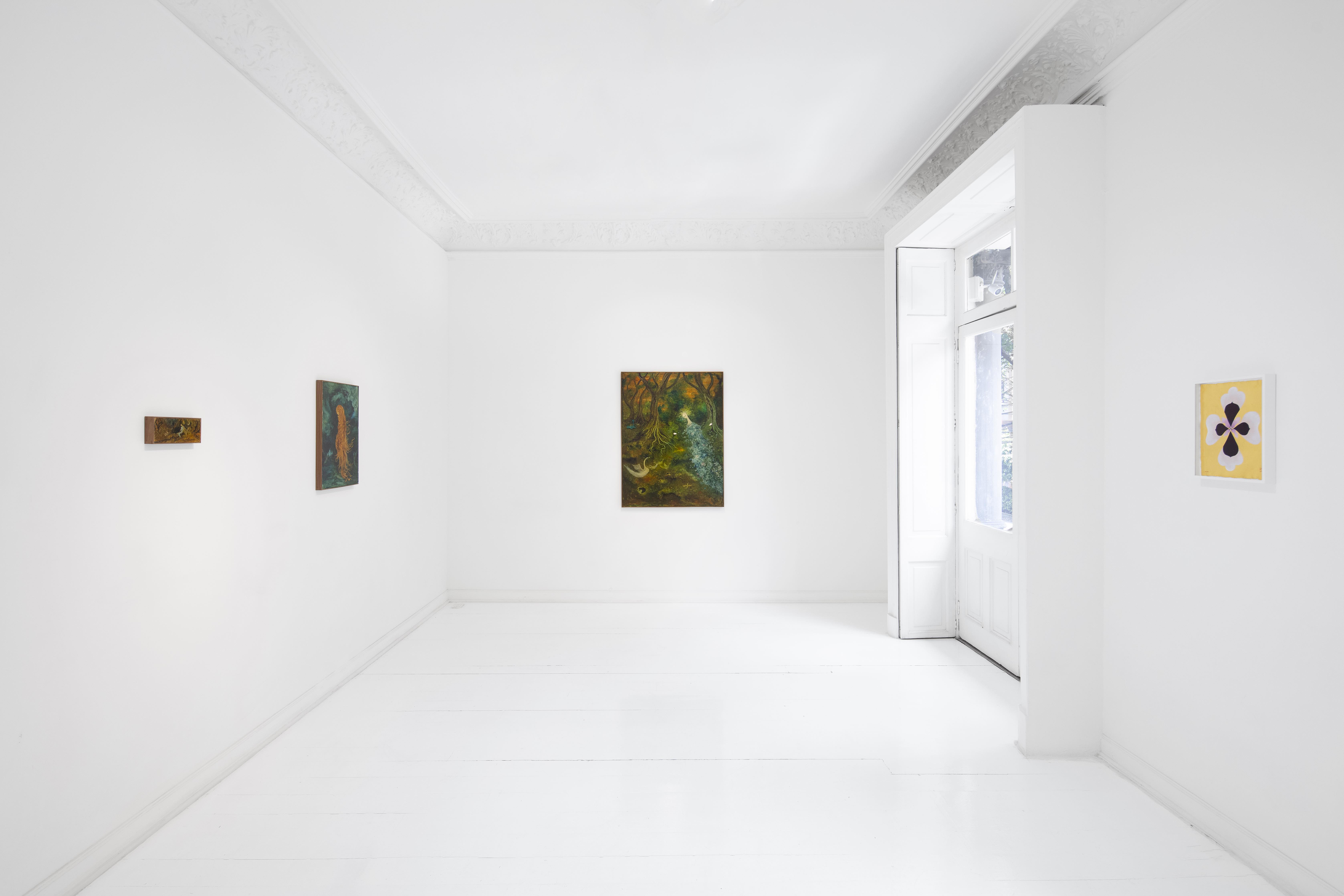
Review
In Search of the Ether: Sofía Bassi + Elena del Rivero at Travesía Cuatro
by Verana Codina
Reading time
4 min
Travesía Cuatro presents its latest joint exhibition featuring the artists Sofía Bassi (Veracruz, 1913-1998) and Elena del Rivero (Valencia, 1949). Although strictly it’s the work of two artists, the exhibition looks like it belongs to a collective of women who, through exchanges and conversations – mostly indirect and at distant times – contributed to defining a visual language of the mystical in modern art.
The correspondence between them is undeniable. On one hand, del Rivero pays homage to the pioneer of abstract art, Hilma Af Klint, and on the other, Bassi stands as a contemporary of surrealists Leonora Carrington and Remedios Varo. In this text, I celebrate the possibility of their convergence – even if not physical – within the same space. In their complicity, I discover that abstraction and surrealism – despite differing in their approach to figuration – coincide in their formulation from and within the self: the pursuit of the spirit in the case of abstract art and access to the unconscious in the case of surrealism, both with the aim of returning to the ancient orders that once governed human understanding when the material and the spiritual worlds were inseparable.
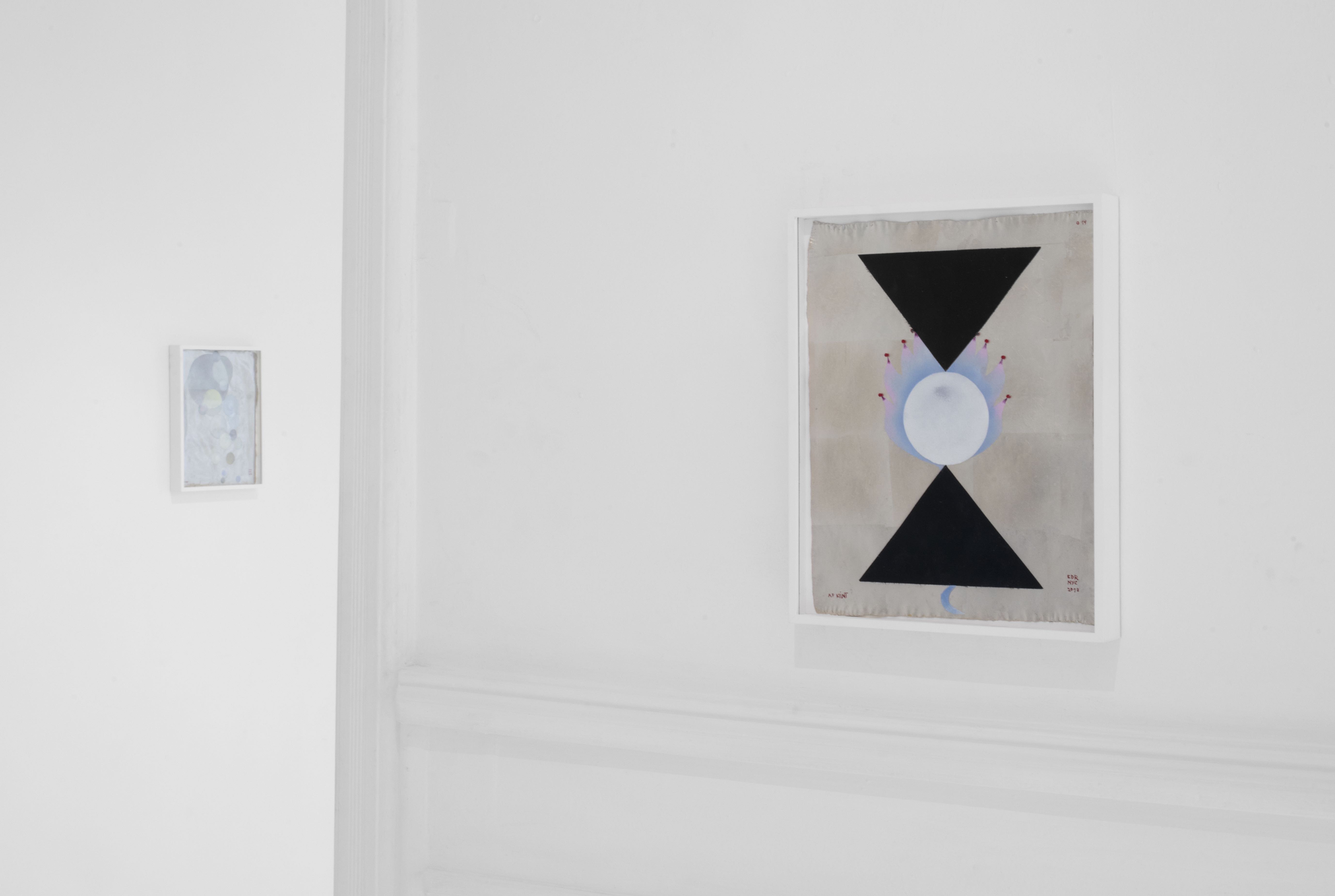
If we approach the exhibition from a feminist perspective, it is not a coincidence that figures like Af Klint, who developed an abstract pictorial language as early as 1906 (far before Wassily Kandinsky) resonate so strongly. This is in line with the enduring significance of the iconography developed in surrealist painting, particularly by authors like Carrington and Varo, who managed to establish – more than any of their homonyms – an unmistakable symbolism, claiming and making the visual language of this vanguard their own.
This symbolic heritage speaks to a preference for a visual code and representation associated with the female gender, heavily influenced by alchemy and other esoteric practices of past centuries. The use of symbols derives from theology, mysticism, and the occult, originating from a medieval lexicon. It was an era in which the rational and the irrational, the scientific and the spiritual, intertwined indiscriminately and where it was understood that all matter in the world was interconnected as part of a whole. There was no rivalry between the forces of man and the fullness of nature.
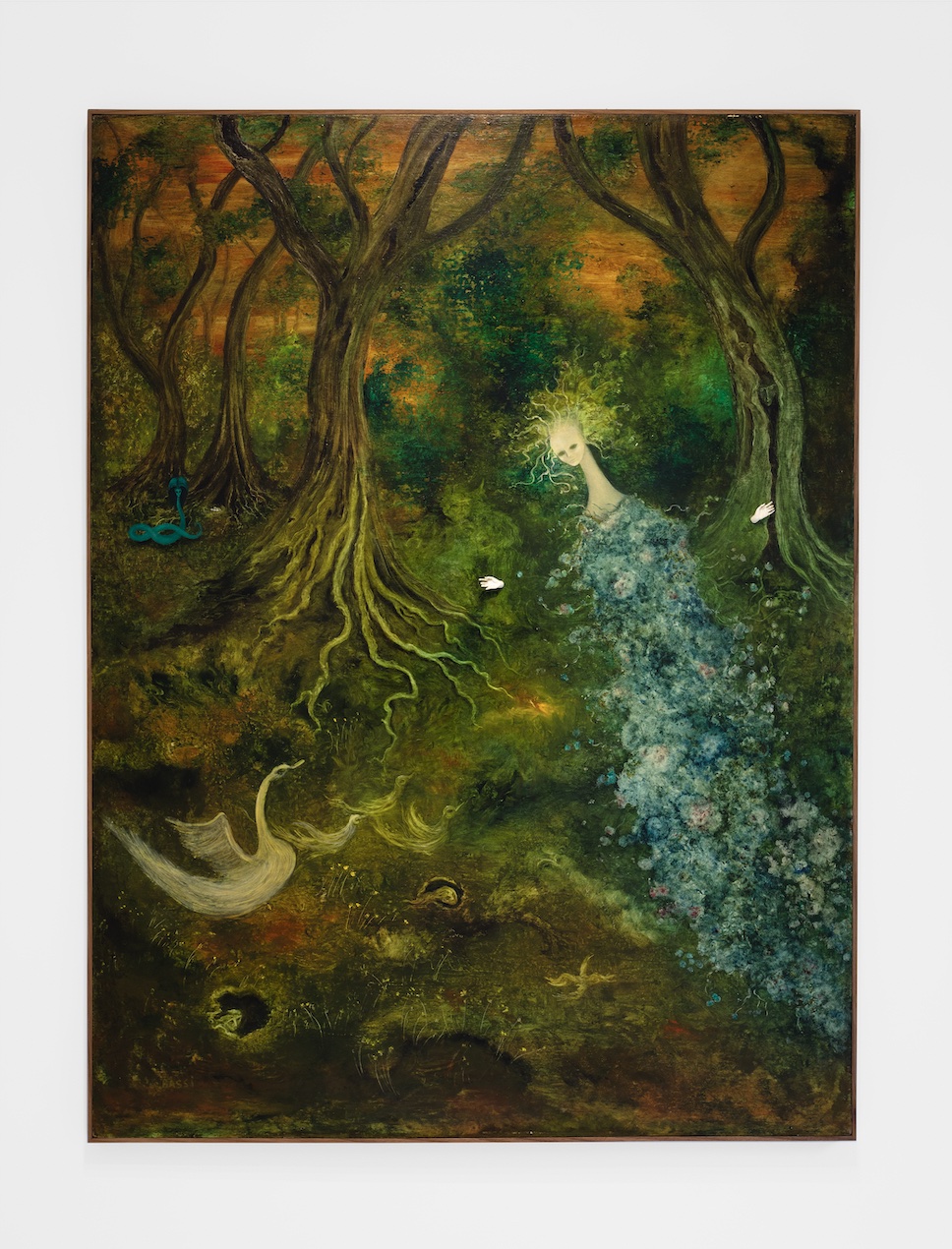
In this sense, the forest – a recurring symbol in Bassi's paintings – represents the place where the hidden is discovered and the unknown takes shape; despite its apparent hostility, it can be penetrable if one truly desires to access its depths. Crossing the threshold – in a transition from consciousness to the unconscious, comparable to the process of free association adopted by the surrealists and known as automatism – it is possible to find and inhabit a world in which all beings converge. In her enigmatic images there is always a tension between binaries: interior and exterior, earth and sky, underworld and paradise, fertility and drought, light and darkness, sometimes even appearing within the same canvas, creating balanced dual landscapes that both delight and terrify the viewer. In the same line, the artist brings together fantastical and mythological beings with mostly long-haired female figures.They wander through the small, illuminated nooks of earthly castles or ascend to celestial cities, becoming cosmic entities.
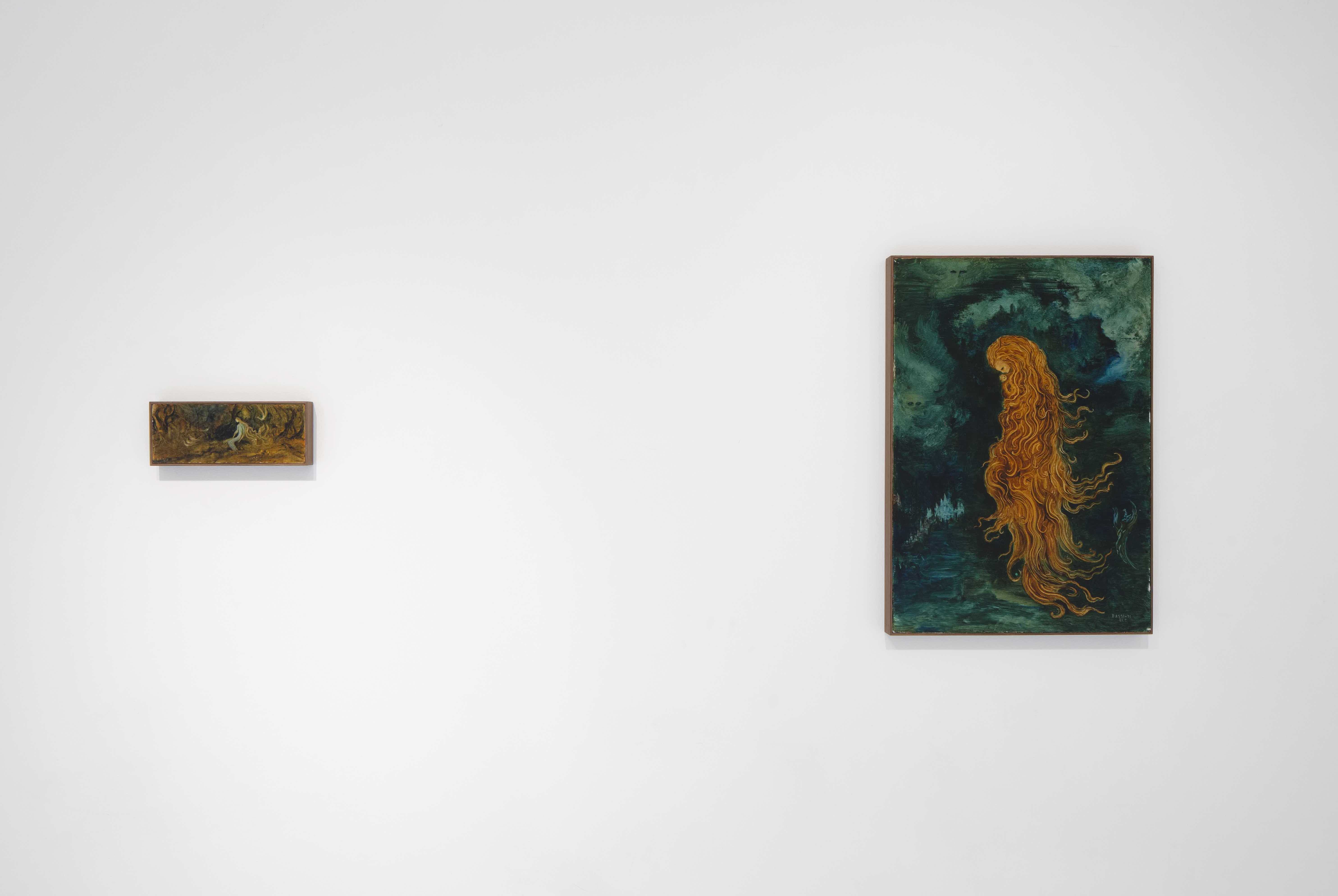
While Sofia Bassi achieves an allegorical balance, Elena del Rivero ventures to do so from a more physical and material perspective by involving and experimenting with materials such as gold leaf and palladium – a precious metal from the platinum group – in relation to geometric forms that subtly appear on the canvas, all of which combine to achieve a balance between form and matter in her compositions.
Her oil paintings, numbered on the upper right edge and marked with 'AF Klint' on the lower left, comprise a series of sets of geometric figures that maintain a personal signature, even though their resonance with the Swedish painter and theologist’s work is evident. I like to think that in their imperfect strokes, there is room for an understanding that goes beyond the pictorial, an almost alchemical effort of what the exhibition text describes as "much more body and skin than representation and mimesis."
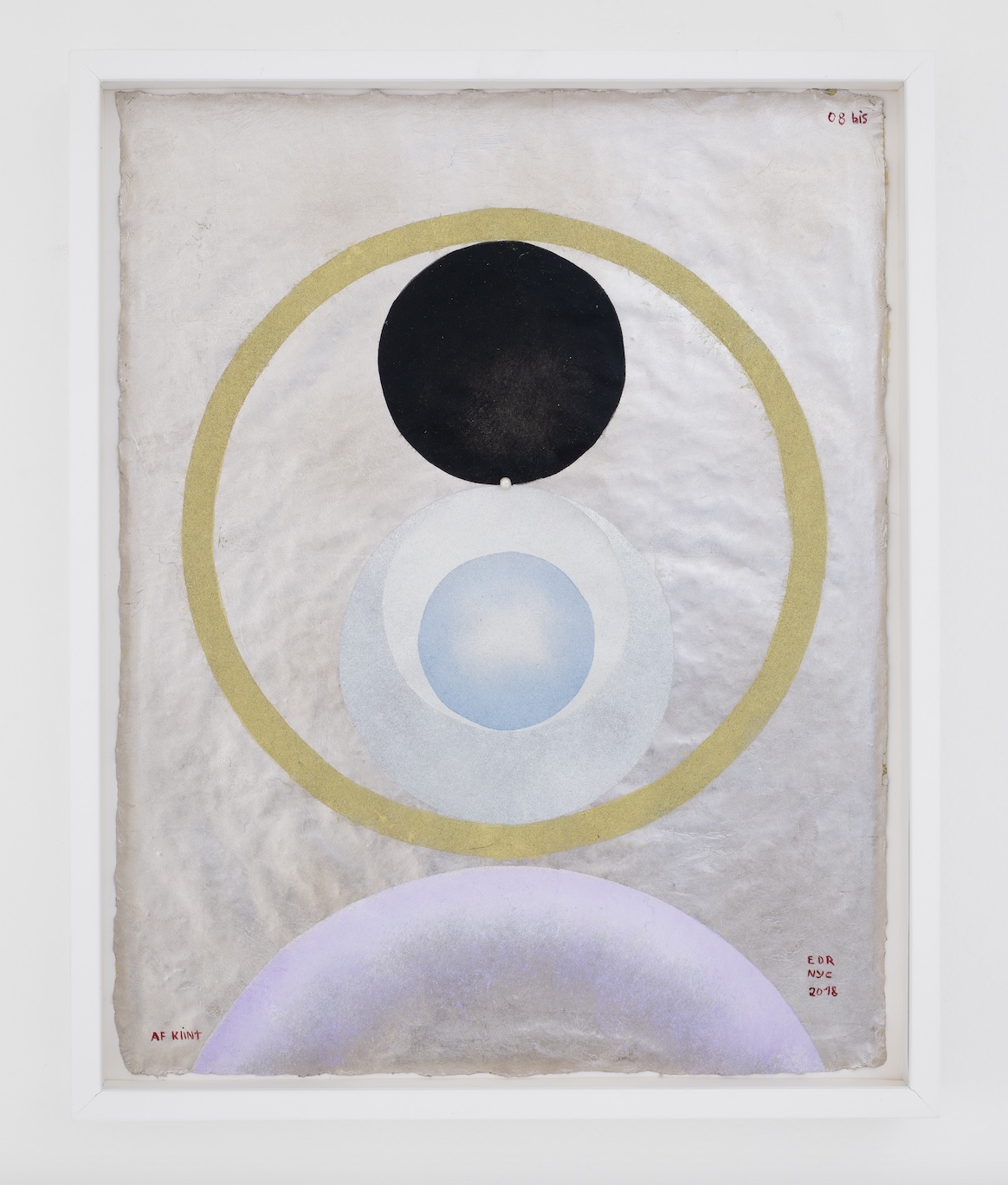
The foundation of alchemy was based on the accompaniment and balance of the four natural elements: earth, air, fire, and water, coupled with a quest for quintessence or ether, in order to attain a complete understanding of the universe. It is time for us, like Sofía and Elena, to return to a confrontational harmony that will only be possible if we become alchemists of our own lives.
Translated to English by Sebastián Antón-Ojeda
Published on September 2 2023